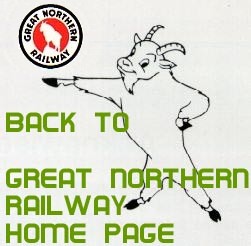|


| |
Click here for King Street Station's 100th birthday celebration.
Click here to climb up the inside of the King Street Station
tower!
Click
here to view the beautifully-restored (June 2013) depot interior!!!
History of King Street Station
Looking Back
Mention King Street Station to a Seattle resident and images of the clock tower
come to mind. But things were not always so grand in the Emerald City. A
traveler to Seattle in the 1800s would have arrived at a station resembling a
giant woodshed. Seattle's train station has reflected both Seattle's place in
the world and the importance of rail travel to society. In mid-1864, Congress
chartered the Northern Pacific Railroad in order to establish service to the
Pacific Northwest. This sparked competition by many communities seeking to
become the railroad's western terminus. From a list that included Olympia,
Steilacoom, Seattle, Tacoma, Mukilteo, Whatcom, Fairhaven, Port Townsend, and
Anacortes, a railroad committee narrowed its selection of the western terminus
to three finalists - Seattle, Mukilteo, and Tacoma. Tacoma was selected.
Shunned by the Northern Pacific, Seattle was served by several small rail
companies including the Seattle & Walla Walla as well as Lake Shore &
Eastern Railroad. These smaller lines had no need for a grand facility. The
situation began to change with the arrival of James J. Hill and his Great
Northern Railroad. James J. Hill knew the railroad business. While selecting a
western terminus for the Great Northern Railroad, Hill shrewdly received
concessions from the city of Seattle by feigning indecision between Bellingham
and Seattle. He gained railroad right of way to Seattle and with his local
partner, Judge Thomas Burke, effectively shut out the Northern Pacific.
Hill was not quick to abandon his hard driving tactics. Even while Seattle
prospered as a rail terminus and grew significantly during the 1890s, passengers
noticed the poor condition of their rail station facilities. Seattle resident
Welford Beaton commented, "It was perhaps the worst excuse for a depot
operated by any railway in the world in a city as large as Seattle - It had
become a sore spot with the citizens, who had to apologize for it every time
anyone landed at it." During the height of the 1890s depression, Hill had a
pointed response to requests for better facilities. "It is more important
to Seattle to have goods delivered to it cheaply than to have a fancy
depot."
Woodshed to Cathedral
With the turn of the century and a stronger economy, Hill reconsidered. Soon
plans were underway for a new station. In 1903, he hired the nationally renowned
architecture firm of Reed and Stem. They were best known for designing the Grand
Central Terminal in Manhattan. Their plans called for a 245-foot clock tower
that was closely modeled after the campanile at the Piazza de San Marco in
Venice, Italy. Crowned with a glass tiled cap, the campanile was to be lit at
night and serve as a beacon for travelers and citizens. Inside, particular
attention was paid to the design of public spaces. The large general waiting
room, lavatories, and vestibule at the tower's base were all to have ceilings of
ornamental plaster and fluted columns. Marble was to be used in the wainscoting
along with glass and gilded mosaic. The Seattle Post-Intelligencer of November
15, 1903 described the new plans. "The proposed structure - will be
finished and equipped with elegant appointments and all modern
conveniences." King Street Station was built from 1904 to 1906. The
construction also coincided with the golden age of rail travel.
The War Years
King Street Station saw its heaviest use during World War II, reflecting
Seattle's importance to the war effort. During the war years, the station was
crowded with military personnel shipping out to the Pacific and Puget Sound
Naval bases. Civilians filled the station on their way to the shipyards and
Boeing's strategic aircraft manufacturing plants. Ridership was also helped by
the wartime rationing of gasoline and rubber. The Decline of the Railroad The
end of the war also signaled the decline of railway transportation in America.
Seattle was no exception. The seeds were sown earlier in the century. Henry
Ford's Model T brought the automobile within reach of the average American
family. Surface highway miles doubled from 1920 to 1930 and then doubled again
by 1940. The success of the aircraft industry also helped move passengers away
from the rails. By 1957, the airline industry surpassed railroads in terms of
revenue passenger-miles. The trend continued, and by 1970, fewer than 400 daily
intercity passenger trains were in service, down from a World War II high of
approximately 20,000.
From Riches to Rags
The 1960s saw the station's modernization improvements. In 1963, a suspended
ceiling was added to the waiting room. The beige tiles completely blocked the
view of the soaring, ornate molded plaster ceiling. All open views from the
balconies were similarly blocked by fill material. In 1965, marble wainscoting
and drinking fountains were removed. Any decorative plaster molding left below
the suspended ceiling was broken off and thrown away. The terrazzo and mosaic
floor in the women's waiting room was covered with vinyl composition tile. The
lavatories were stripped of their original furnishings. The final blow occurred
in the early 1970s when all windows in the southern section of the main waiting
area were removed and filled with a cement-like substance.
Back to the Future
As the Pacific Northwest begins to realize the important role rail will play in
addressing the transportation needs of the 21st Century, King Street Station is
looking to recapture its old glory. The suspended ceiling will be removed and
placed on the ash heap of history. Windows throughout the structure will be
uncovered and natural light will flood the waiting room. Replicas of historic
lighting and wall fixtures, made from molds taken from original pieces
contributed by private citizens, will grace the elegant interior. Finally, the
glass pyramid at the top of the clock tower will be cleaned so that once again
King Street Station can serve as a beacon for both travelers and citizens.
The End.
  |